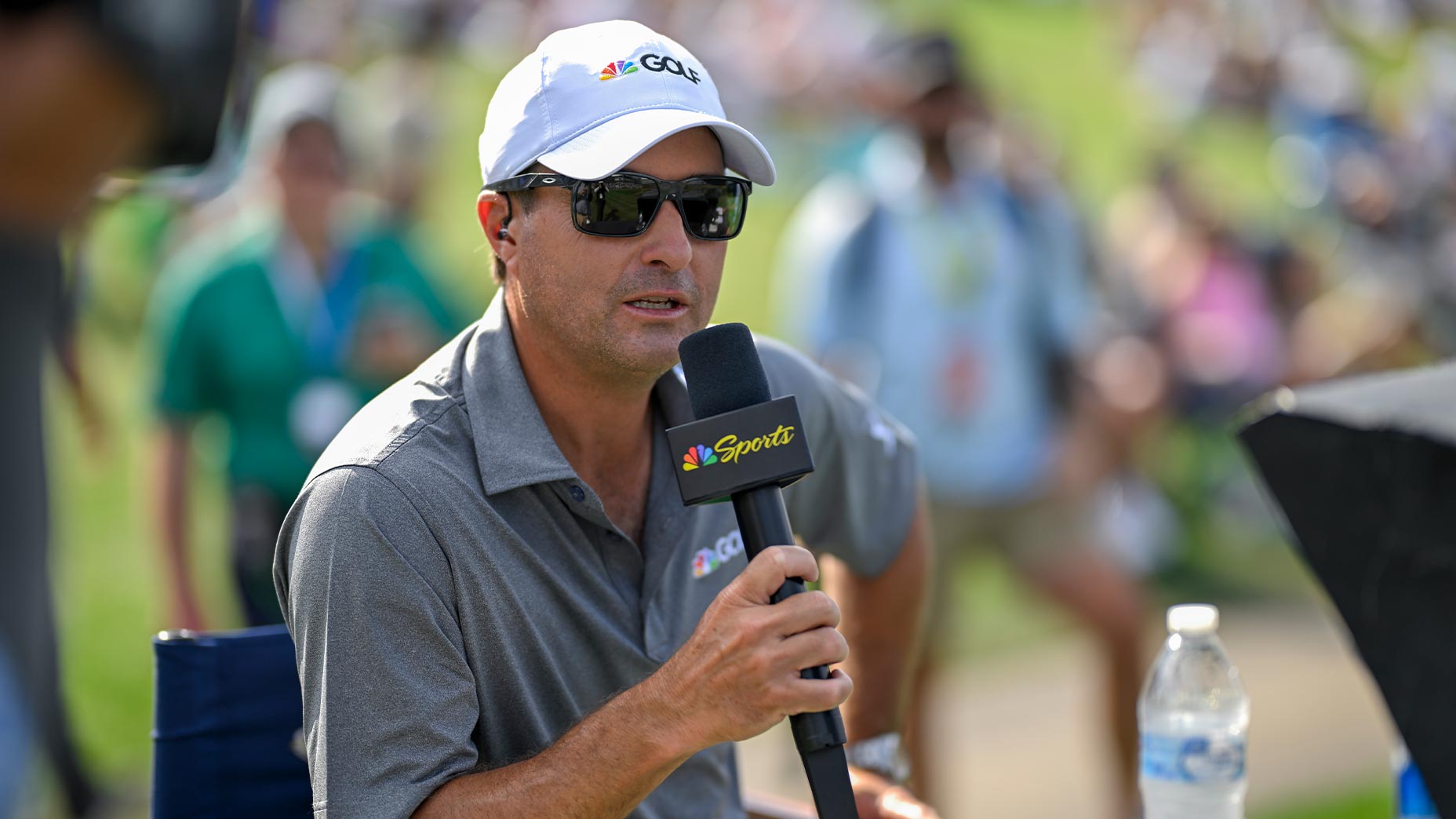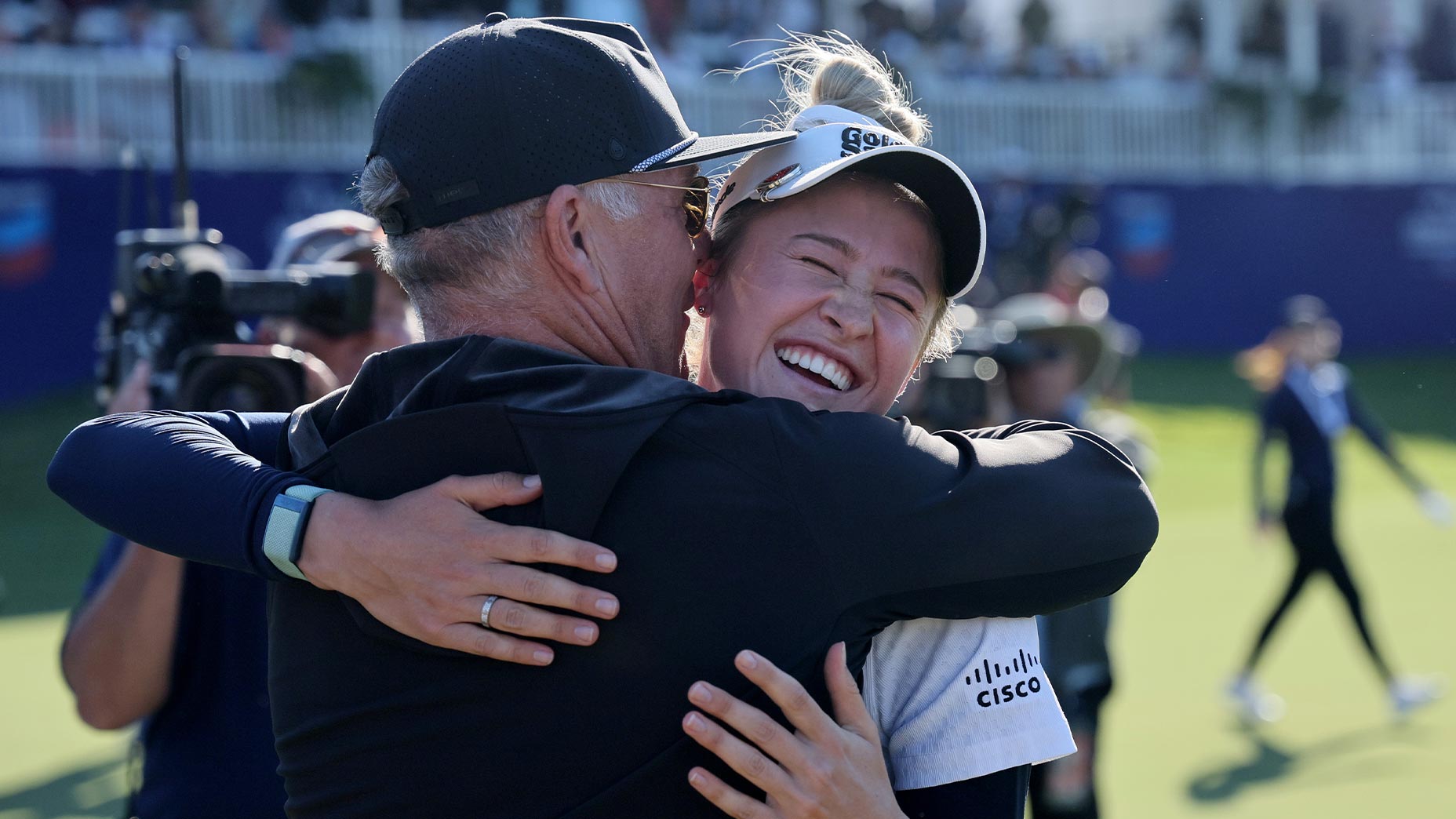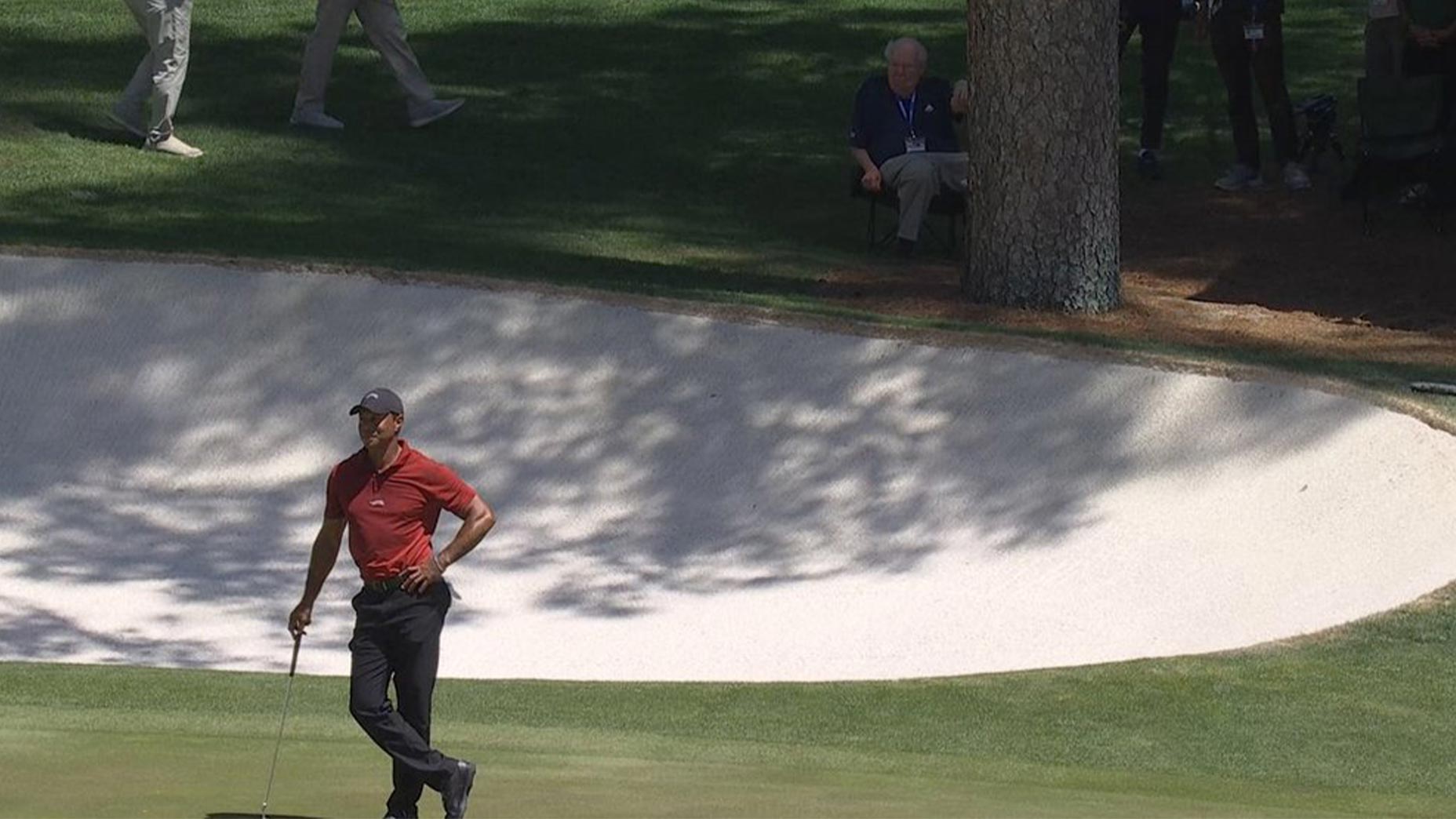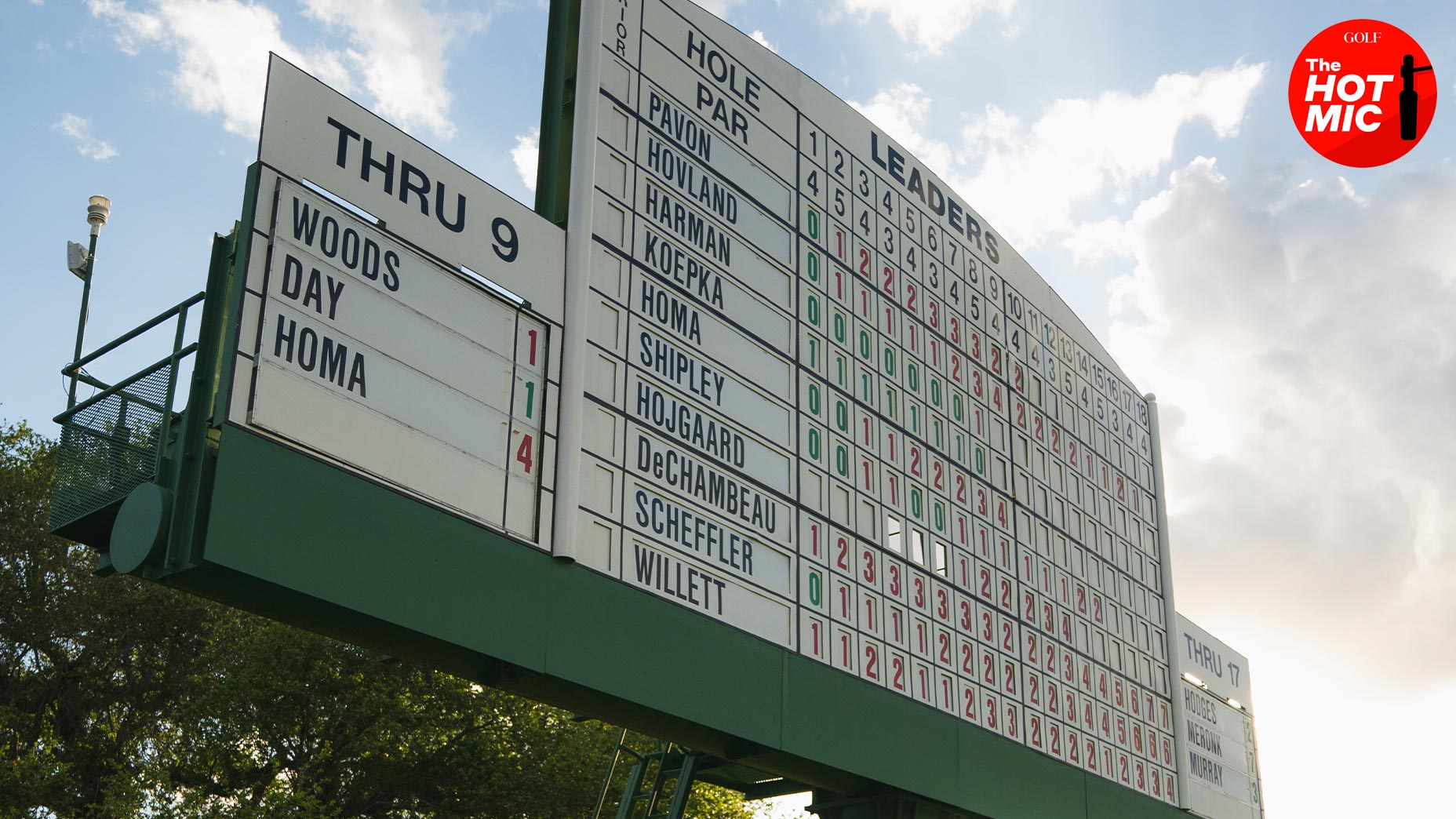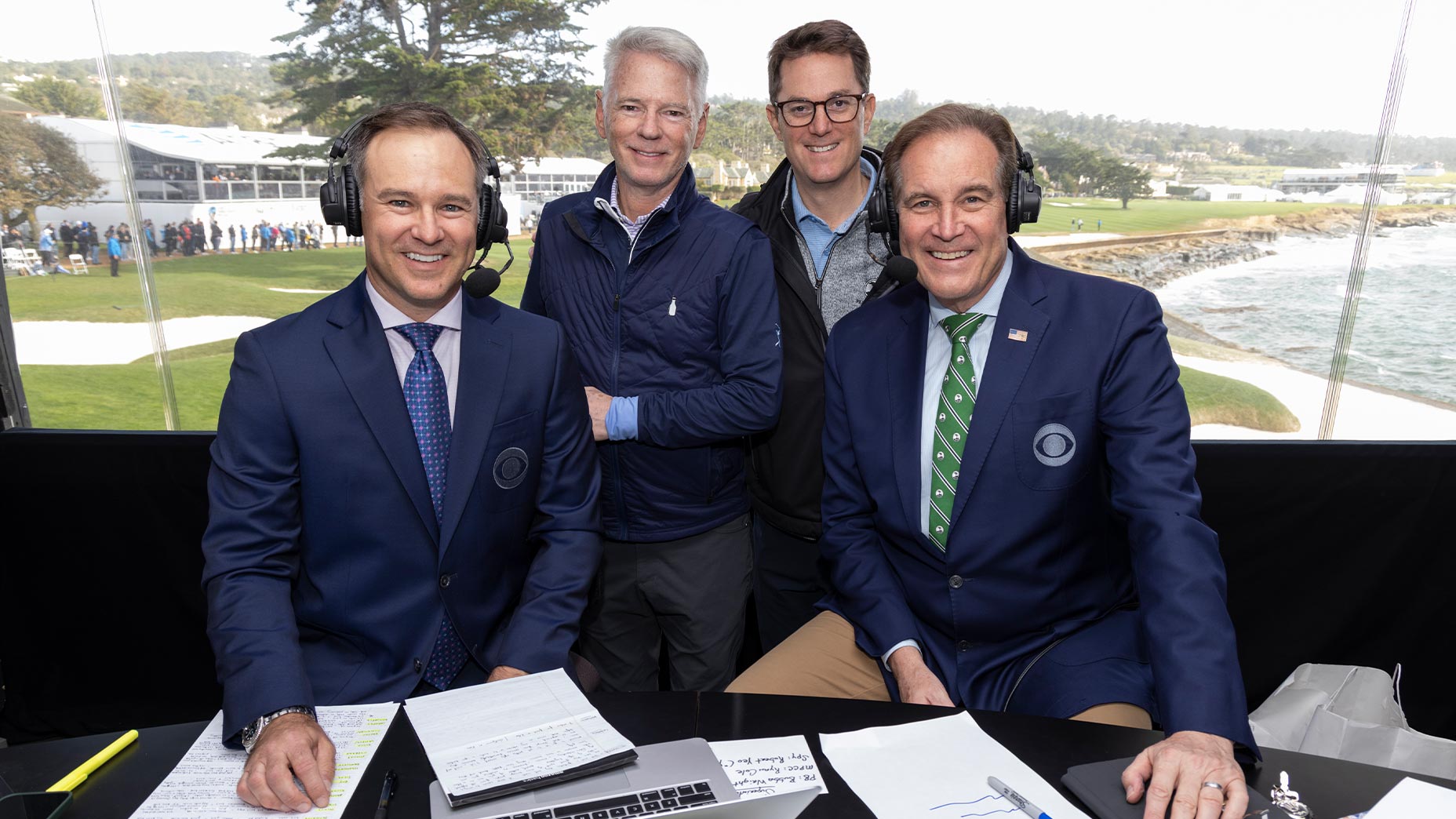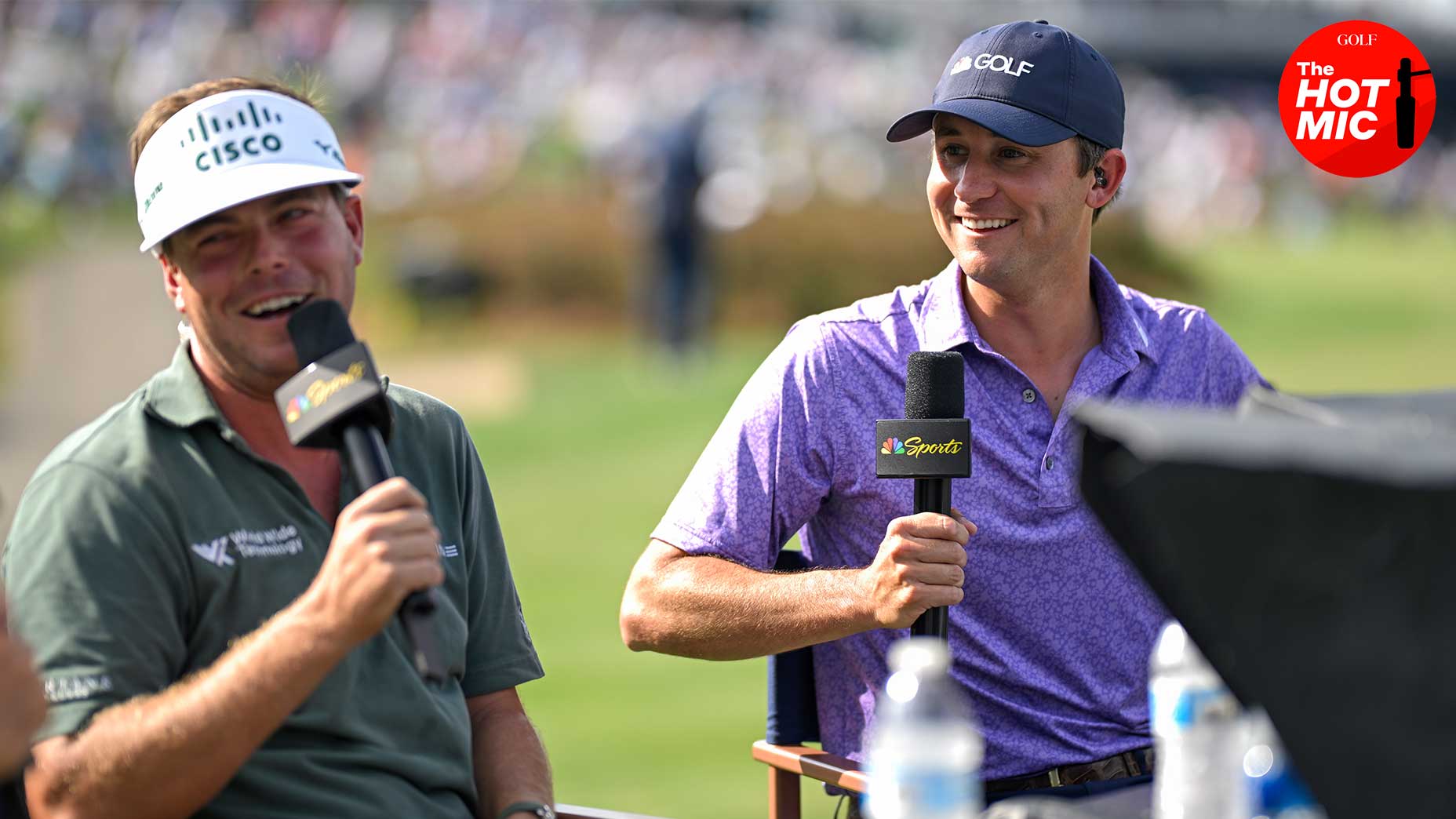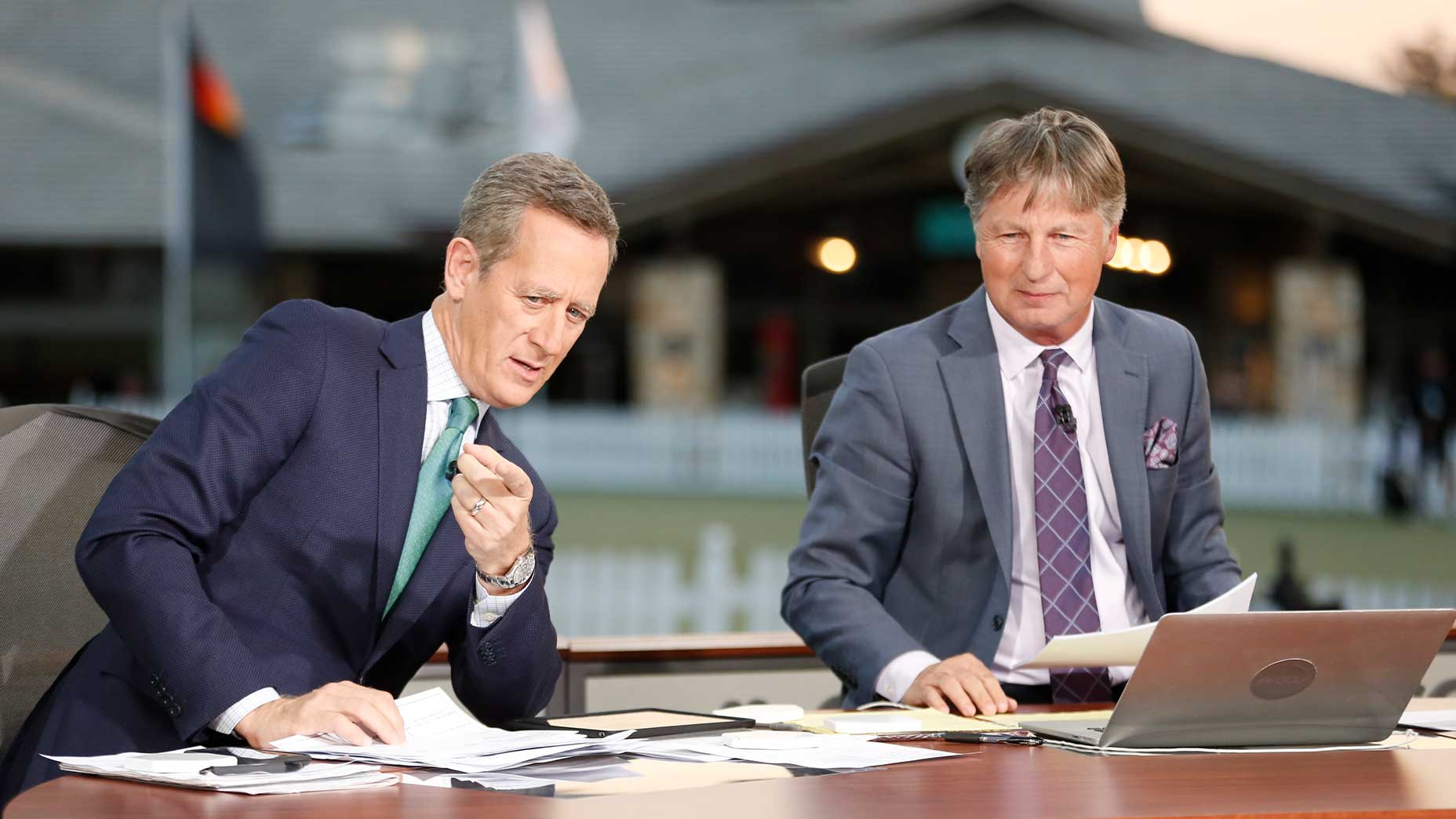Netflix’s golf flop still delivered one massive winner
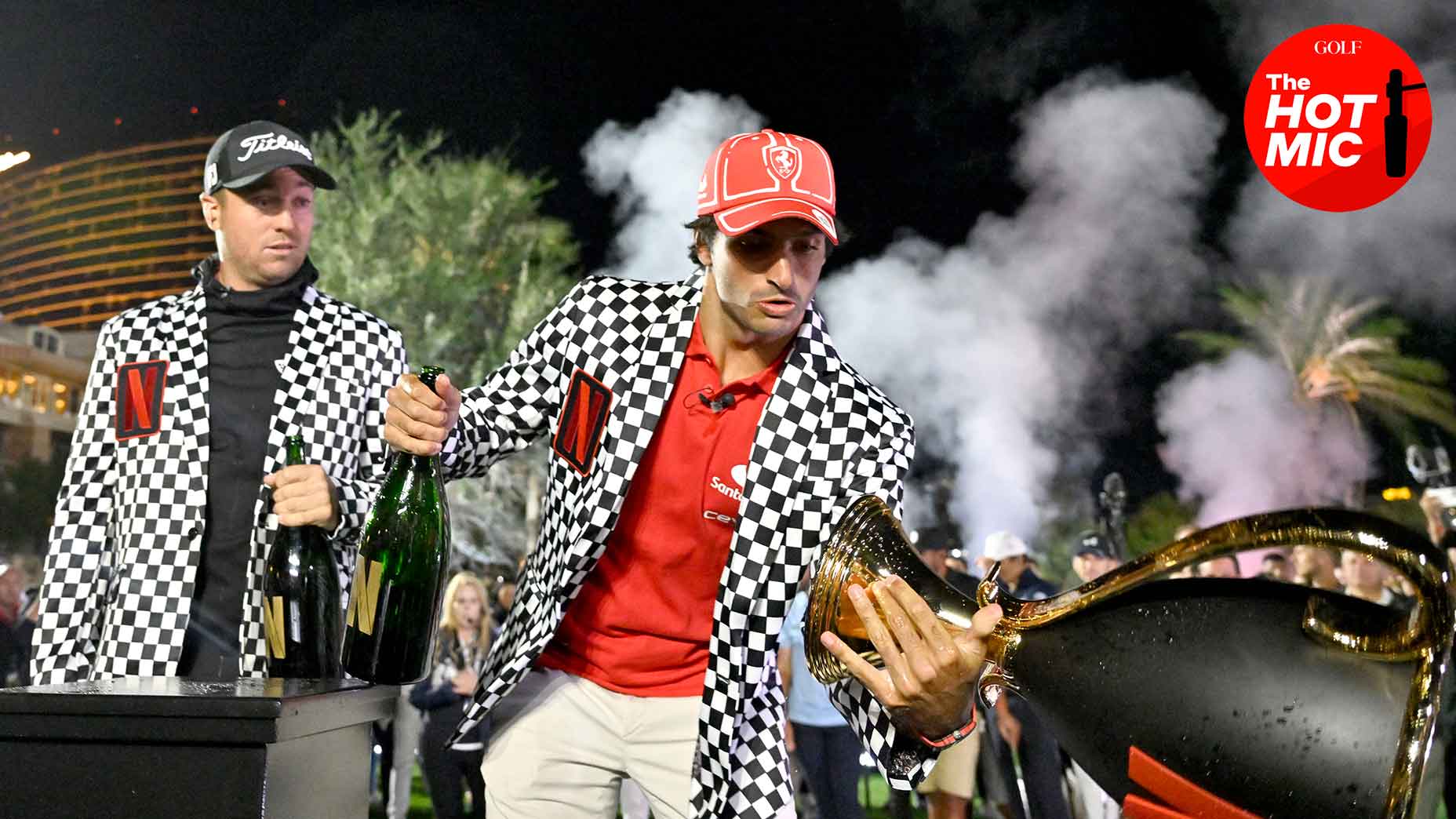
Carlos Sainz's trophy drop underscored a flat evening for the Netflix Cup.
Getty Images
It is telling that the highest-wattage moment of Tuesday night’s Netflix Cup came while the credits rolled.
There was Carlos Sainz, the night’s victor, sporting a racing-striped blazer, a magnum bottle of Champagne, and an all-black trophy with the Netflix N logo. As an overhead drone shot zoomed into oblivion, Sainz tipped the bottle toward his head and the trophy toward his playing partner, Justin Thomas, when suddenly gravity kicked in.
The trophy tilted toward the ground, and the not-insignificant contents of champagne followed, splashing toward the edge and creating a cascading effect against the rim of the trophy. Before Sainz knew it, the Cup had fallen to the ground in a heap of black metal.
Those watching at home might well have missed it. The trophy had contacted the earth for only a split second when the Netflix cameras cut elsewhere. But the images taken by the on-site photographers told the story: the trophy was destroyed, and the victors were reduced to a giggle. At long last, the Netflix Cup had produced a viral moment.
For good reason, golf has always been the sideshow at made-for-TV events like the Netflix Cup. What we seek by tuning in is varied, but what these events provide us is monolithic: star power. A round of golf is a natural vector for viewing a person in a new light, and golf’s propensity for the embarrassing makes the celebrity-match format perfectly suited for virality. Events like the Netflix Cup — and before it, The Match — are custom-built for the young, hyper-online corner of the sports internet, where its array of microphones and high-tech cameras feel tailor-made for social media fireworks.
It was not surprising to see Netflix’s first-ever live event follow this blueprint. The streaming giant has long flirted with the possibility of entering the live sports broadcasting game, but the idea of diving straight off the deep end with a major live sports property, as rival Amazon had done with its NFL Thursday Night Football package, felt extreme. Netflix needed something simpler — a low-risk, high-reward proposition — to iron out the boring pieces of hosting a live sports broadcast, like testing software tech and feeling out advertiser interest. If that event made money and attracted viewer interest? Great! If it served only as a testing ground for the app’s live capabilities and mantlepiece for the company’s execs? Well that was okay, too.
The sell was idiot-proof. The Netflix Cup’s cast was already built in, thanks to Netflix’s outstanding relationship with stars from F1 and golf through its popular Drive to Survive and Full Swing docuseries. The golf course was familiar to much of the production crew, many of whom had participated in previous iterations of The Match also held at the Wynn. And the timing was good, simultaneously during the golf quiet season and F1’s much-bandied Vegas stopoff. When it finally came time to go live on Tuesday afternoon, the runway was cleared: it was time for Netflix’s moment in the sun.
What followed during the next 2.5 hours was, well, not The Hangover. The format was confusing and the last-second departure of Collin Morikawa left the competition disjointed. The early audio crackled and glitched to the point of being unlistenable. Many of the competitors seemed confused about whether they were supposed to be acting funny or cool. Even for an event with an admittedly loose connection to competitive golf, there was too little commitment to the on-course product for it to be taken seriously.
(There was some good sprinkled in, too. The tournament was produced with the short attention span of a younger sports audience in mind — a difficult job the production staff handled admirably. Joel Dahmen was a sparkling addition to the booth, and Max Homa’s prior CBS and NBC on-course interviews have clearly paid dividends.)
But almost everyone would agree that the night’s most apt moment came during the trophy ceremony, when the Netflix logo came crashing out of Sainz’s hands and onto the ground. The analogy worked on a few levels. Sure, Netflix’s shiny new event had taken a few bumps on the chin, as almost every social media observer pointed out. But to the suits wandering through the company-branded hospitality setup, the gaffe (and ensuing response) represented something much different: at long last, Netflix had made it into the imperfect world of live television.
This, it turns out, may be the most significant development of the Netflix Cup: Netflix is part of the conversation in live sports. Tempting as it is to write off the Cup as the latest in a string of sizzle-but-no-steak golf entertainment products, Netflix escapes with a victory much larger than any (now two-pieced) black trophy. It has crossed the Rubicon into the world of live sports coverage, and there’s very likely no turning back.
Why does this matter? Well, because Netflix is the largest player in the streaming industry — and also notably, the last major media company to enter the sports rights business. It represents the dawn of a new age at Netflix, one in which it can expand its business beyond the traditional subscription model and into the brave new business of advertising.
Just a year ago, that would have sounded ridiculous. Netflix has made nearly all of its billions betting on the commercial-free subscription model. It wasn’t until economic headwinds struck the streaming industry that company executives even considered the option of an ad-supported tier, and not until those same headwinds nearly upended the industry late last year that the company launched such an offering.
The ad business has grown slowly for Netflix — it only recently passed 15 million ad-tier subs — but it’s come with a surprising revelation: Netflix makes more money per customer on its ad-supported tier than it does on its ad-free tier. That news has led Netflix leadership, including CEO Greg Peters, to announce that growing the ad business is Netflix’s “No. 1 priority” heading forward.
Of course, one way to boost that business is to continue investing in the ad-supported tier, as it appears Netflix is keen to do in 2024, the first full year after password-sharing bans went into effect for users. But another easy way to woo advertisers while attracting the attention of hundreds of millions of paid subscribers? Well, that would be live sports.
Annually, the sports business represents a significant chunk of the advertising industry, generating billions in revenue for networks and streamers. Netflix has long resisted entering this world, citing its desire to avoid “renting” eyeballs and entering the increasingly costly business of sports TV rights. But company execs are also smart enough to realize the untapped billions that exist in advertising, not to mention the boost that live sports could give both its subscriber numbers and its advertising revenue by serving in-game ads to those in all subscriber tiers.
We haven’t quite reached that reality. It should be noted that the Netflix Cup broadcast did not feature any advertisements for the entirety of its 2.5-hour live window, only a host of internal promos. As of today, Netflix has no sports rights, and despite several rumors, the company is much closer to its norm, shows like Full Swing season 2, than it is to securing a rights deal with any major sports league.
But there’s little doubt now about where things are headed for Netflix. We have Tuesday to thank for that. The Netflix Cup wasn’t a blockbuster. It could be far more valuable than that.




